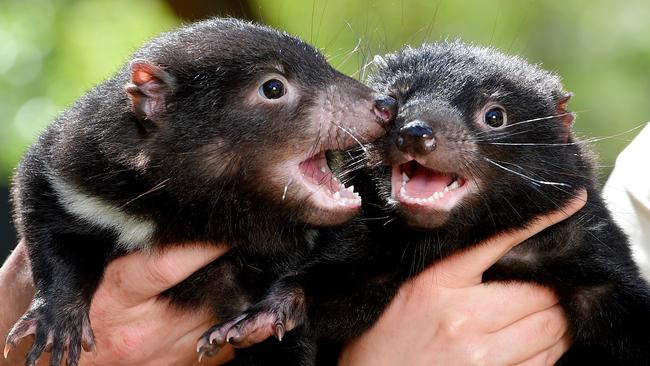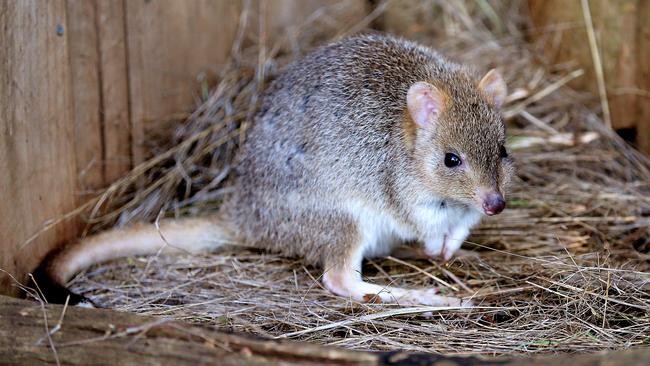Researchers say Tasmanian devils could be solution to Australia’s feral cat problem
LOOK out feral cats and foxes. Scientists have a bright idea about how to stop the scourge of the pests. And these angry buggers will play a leading role.
THEY are our most feisty four-legged icon, fighting back from the brink of extinction and earning a badass reputation in cartoons and comic strips.
Researchers now think the Tasmanian devil could be the solution to Australia’s feral cat and fox problem.
In an new study, ecologists from the University of NSW said reintroducing devils to mainland forests for the first time in 3000 years would stop the spread of foreign predators, which prey on endangered native species, such as the bilby and bandicoot.
So devastating have feral cats been on native fauna that the federal government has vowed to kill 2 million of them in the next five years.
Study co-author Associate Professor Mike Letnic said evidence suggested Tasmanian devils couldn’t coexist with dingoes, but in areas where dingoes had disappeared, the reintroduced devil would outrank cats and foxes as top predator.
“Foxes have been introduced to Tasmania several times and they’ve never taken hold, and as Tasmania is not particularly different from the mainland, the best explanation as to why foxes haven’t been able to thrive in Tasmania is the Tasmanian devil,” he told news.com.au.
“What we envision is a big trial in a huge fenced area (in Australia’s southeast) where you could see how the devils go, see how they go pitted against foxes and cats, and if that is a success, then perhaps release them into the wider landscape.

“The animals that would benefit are what I would call football-sized native animals, such as bandicoots and potoroo and bettong. A lot of these animals have gone extinct on the mainland, but they still exist in Tasmania where devils are today, and the main reason is foxes and cats.
“So those animals who are left can thrive, and maybe it’s up to the devils to bring these other animals back as well.”
Prof Letnic said the move could also provide an insurance population for the Tasmanian devils, an endangered species that is threatened by a deadly facial tumour disease.
In their study, Prof Letnic and co-author PhD candidate Daniel Hunter assessed how each of the predatory animals — dingoes, devils, cats and foxes — affected the population of their prey or competitors.
They concluded the devil would be a threat to cats and foxes — but slightly less so than the dingo was, because of the devil’s smaller size and appetite.
They also examined where the devil would be best placed if reintroduced on the mainland.
“Based on where they live in Tasmania … there’s a narrow strip going from Victoria up the Great Dividing Range and the Western Slopes into NSW, to about New England, where devils could live,” Prof Letnic said.
“It could be that devils would not be limited to that climate at all, and could spread out. We don’t know that … they’ve never been tested.”

Prof Letnic admitted the suggestion to reintroduce the Tasmanian devil to the mainland was “bold” but there was an urgent need to address Australia’s feral cat and fox problem.
“Foxes and cats have been absolutely devastating for Australia and our fauna, and again, just a simple comparison with Tasmania or Kangaroo Island, where there are no foxes, makes it clear how big the problem is,” he said.
“One of the solutions we use at the moment is to basically shove truckloads of poisons out into landscapes.
“I think if we can think about getting native animals to do a lot of that work, that would be much better.”
The Tasmanian devil — which can crush bones with its small but powerful jaws — once roamed the whole continent but became extinct on the mainland about 3000 years ago, probably due to the arrival of the dingo.
Researchers believe extensive dingo culls created a gap in the ecosystem that allowed foreign predators like cats and foxes to boom and wreck havoc with local fauna.




